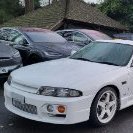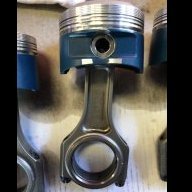What Intank Pump Will Deliver The Most Flow? Nismo?
Announcements
-
Similar Content
-
Latest Posts
-
By TurboTapin · Posted
Besides packing it, you can also fill your pump through the oil filter inlet port. After cranking for what felt like an eternity without pressure, i fed a tube in through there and filled it with oil. Cranked for a few seconds after that and had pressure. -
By TurboTapin · Posted
That's exactly what I told myself. I'm happy it came out. -
My bet is there's a fuse somewhere you blew that feeds power to the ECU. Or you've bumped something out behind the dash board.
-
By Desean Strickland · Posted
Does anyone know what the centreline should be for the vct intake cam? On my cam spec card it just says VARI and doesn’t actually tell me what the centreline should be. I had to adjust my exhaust cam gear by about 5 degrees advanced so I’m guessing I would have to adjust my intake as well? Current intake centreline is 119 deg. Iv already asked kelford and they won’t respond, It’s the 246-A 262 cams. thanks for the help guys -
By joshuaho96 · Posted
Get a timing light on it and verify it's sparking reliably at a sane ignition timing. Use a COP extension lead to be 100% sure about timing instead of hoping that the timing loop on the back of the engine is accurate. Make sure it's actually injecting fuel. MAF is not used on the stock ECUs for initial cranking.
-








Recommended Posts
Create an account or sign in to comment
You need to be a member in order to leave a comment
Create an account
Sign up for a new account in our community. It's easy!
Register a new accountSign in
Already have an account? Sign in here.
Sign In Now